What associations do you have with the phrase rope ladder? Sailboats, sea battles, sieges and storms of fortresses. What, it would seem, is a gray-haired history, has found its application in our days, especially since a rope ladder with your own hands is quite simple and easy to do.
Due to a number of its advantages, this invention is widely used even now, sometimes it is the only possible convenient means of lifting.
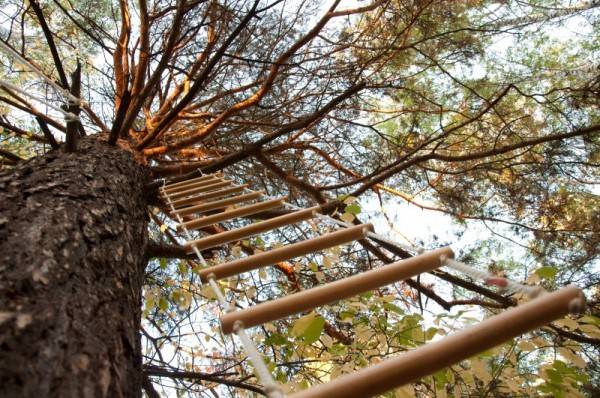
Product advantages and scope

Like any invention, rope analogs have a number of advantages that have allowed it to survive to our time.
Here they are:
- Very compact, collected and stored in special cases or bags, sometimes just folded, while taking up very little space;
- Very light, are calmly tolerated by an adult and even a child (for children, it is advisable to correctly distribute the load and make a cover for the stairs in the form of a knapsack);

- Perhaps the cheapest of the staircase family, since they need rope and wood on the steps to make them;
For your information!
Wood is not the only component that can be used for steps, and other materials, such as aluminum alloys, have proven themselves well.
We will definitely highlight these moments when considering the question of how to weave a rope ladder.
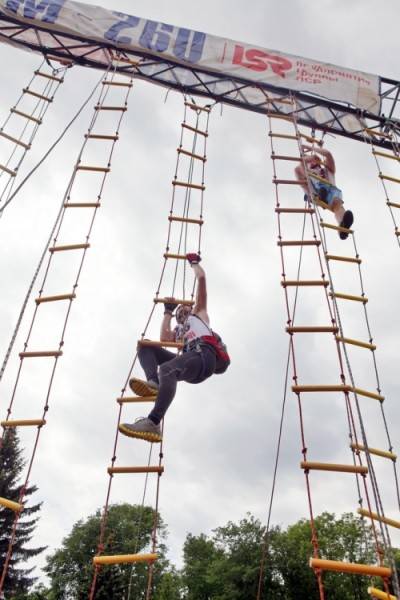
- Ladder length is not limited by the length of the sections as in stationary structures, in addition, the use of simple fasteners will help to lengthen rope ladders with your own hands to the required length. The main thing is that the rope withstands the planned loads;
- Due to its compactness, it allows solving problems, for example, evacuating in places where ordinary ladders cannot be installed, for example, in narrow wells, mountains or when carrying out rescue operations from helicopters.
Based on the foregoing, the purpose of these products becomes clear:
- Traditional use on modern sailing yachts and ships, nevertheless, the fashion for sailboats continues and moreover, these vehicles have shifted to the VIP niche;
- For the development of children, both in stationary solutions of industrial production, and homemade production when equipping playgrounds;
- For medical purposes. This product can be included in the complex of sports equipment for the disabled, or rather for their rehabilitation;
- In the preparation of athletes. This is not necessarily hiking and climbing, practicing rope ladder exercises improves coordination and has other effects;
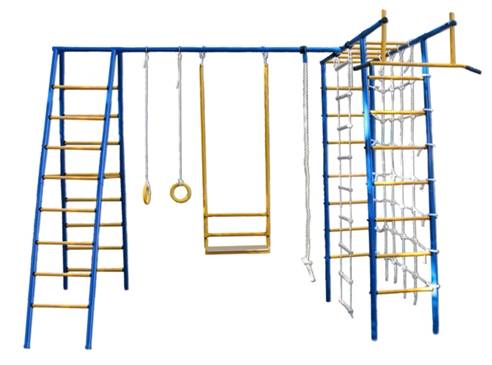
- These ladders have a wide range of applications in rescue operations. Rope fire escape, mine rescue raids, rescue of people from underground, helicopter hoisting when flooding are all areas in which rope rescue ladders are widely used.
From questions of use to materials used
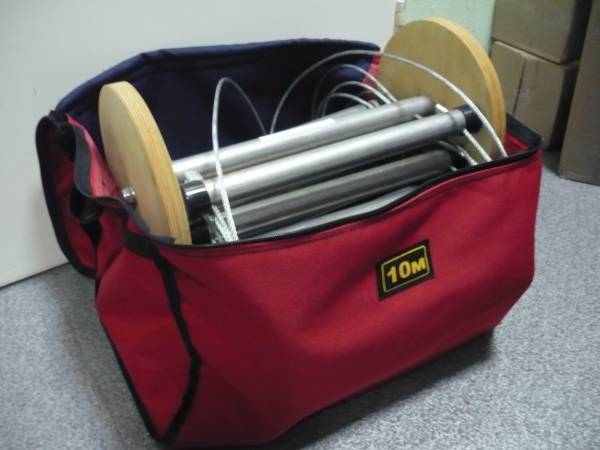
Like any ladder, the rope has steps and guides to which these steps are attached. A variety of ropes act as guides, which will be discussed below, as an optional addition to the rope, they can be equipped with carabiners and (or) special rings that allow you to lengthen the entire structure.
So, closer to the materials, let's start with the ropes that can be presented:
- Synthetic strong ropes, which include nylon, lavsan or other well-proven materials;
Good to know!
Synthetics are synthetics and can be used for general purpose stairs.
Children's rope play ladder must be equipped with ropes of natural origin.
The materials below are suitable for children.
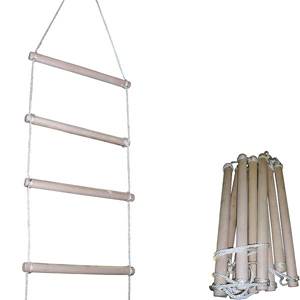
- Ropes and ropes, in the manufacture of which cotton fibers (or cotton yarn) are used;
- Sisal ropes are exclusively of natural origin; specially processed fibers of plants such as industrial hemp, flax, agave are used for their production.
By the composition of the fibers and by our comments, the scope of these ropes is clear:
- The first is exclusively for rescue purposes (another plus of using just such components in rescue operations is resistance to gasoline and solvents). By the way, the price of these products will be lower than that of products using natural fibers;
- The second and third are the whole range of applications.
From fibers to steps.
In this element of the rope ladder, four materials are adequately represented:
- Wood, the most common option, while the steps are made by hand;
- The ropes themselves. Usually ropes are used as jumpers on play stands, as well as when stretching guide ropes on sailboats and yachts. In this case, the entire staircase is made of one material, and the number of rows is three or more;
- Metals. In this case, light aluminum alloys; (see also the article How to make a ladder from metal with your own hands)
- Plastic. As a rule, these products are manufactured industrially and are sold as spare parts for children's playrooms and sports home complexes.
Preparatory stage

Any instruction for the manufacture of a particular product begins with the choice of a solution and the preparation of materials and tools. We will change the course of things a little and in this chapter we will prepare the tools and materials, and in the next we will pay attention to the techniques, since there are two of them, but the set of helpers is practically the same.
Most often, when making ladders of such a plan at home, you obviously will not need a rescue ladder. These will be either children's play ladders or ladders for cleaning wells, so wood can be used as steps, and natural ropes, for example, using sisal fibers, can be used as ropes. (see also the article We select accessories for wooden stairs)
So, let's prepare:
- Two skeins of rope of the same length (not less than 20 meters, each) with a diameter of 12 mm;
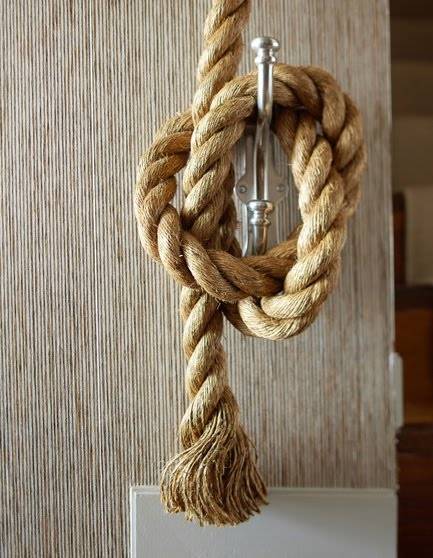
- Cuttings for shovels or garden tools at least 1.2 m long, 3 cm in diameter;
For your information!
The length of one step should be at least 30 cm, the comfort range is 30-40 cm.
One cutting can make 3-4 full-fledged steps for a staircase.
A diameter of 30 mm is designed specifically for a child's hand; for an adult, you can take 50 mm cuttings.
- Hacksaw for wood with fine teeth;
- Drill with drills for wood with a drill diameter of 12 and 6 mm;
- Sandpaper - from coarse to zero;
- Impregnation for wood, possibly paint.
We start assembling
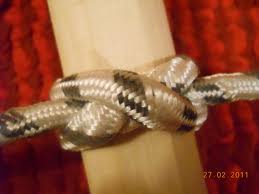
Before deciding how to make a rope ladder, it is necessary to determine how we will fasten the steps with drilling and passing the rope or with a constrictor type fastening (as the boa constrictor is called), while grooves must first be made in the steps.
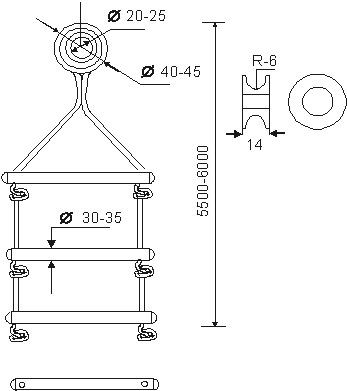
In the meantime, you are deciding on the most suitable type of fastening for you, we will highlight the assembly techniques. (see also the article Children's sports ladders for the home and complexes of various materials)
First technique:
- The purchased cuttings are cut into equal lengths of 30 cm. In the blanks, grooves are prepared with an indent of 3-5 cm from the edge to fix the rope. The most optimal option is to cut the wood on the machine, you can, of course, do it manually, using files, chisels and shallow cuts and any other technique convenient for you;

- Then the ropes are attached to the steps with a step of 30 - 40 cm using the already named constrictor knot. In this technique, there is no need to drill holes in the wood;
Advice!
When tying the steps with rope, the steps themselves must be fully prepared.
Namely: sanded, including grooves for a rope, impregnated with special protective impregnations against rot and fungus, painted if necessary.
And a few more words about the furrows themselves.
The width of the furrow should be equal to the diameter of the rope, the depth should not be less than three-quarters of the diameter for secure fastening.
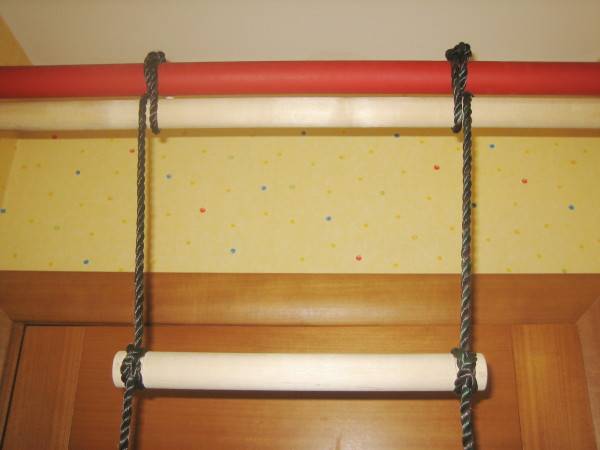
- When making a loop, it takes about 6-7 cm of rope, this must be taken into account when fixing each step and make sure that the distance between adjacent steps is the same. In the case of a significant rope consumption on one side and less on the other, it is better to bandage this step;
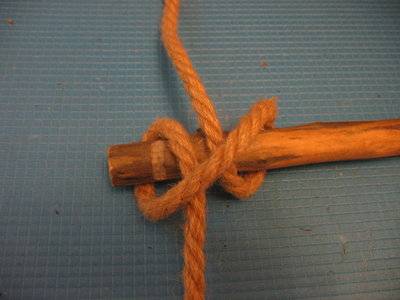
- It is interesting to work with the rope itself. The ends of the rope must be singed, this simple operation will avoid fiber delamination and ultimately the entire rope delamination.
Recommendation!
There are several ways to attach ropes to a fixed location.
Just listing the techniques can take up a significant amount of the article, although they are quite simple.
We draw your attention to the two most common: with the help of carabiners, which, in turn, can be attached to anchor fastenings; with the help of a wider piece of cutting, which can be inserted between strong branches or at the point of divergence of the tree trunk.
When deciding how to tie a rope ladder, it is necessary to mention the second technique:
- The steps are cut in the same way as in the first method;
- Instead of grooves, holes of the same diameter as the thickness of the rope are drilled in the cuttings, the cuttings-steps are processed with sandpaper, impregnated with the same impregnation, painted or varnished if necessary;
Advice!
It is better to start drilling with a drill of a smaller diameter, and then use the necessary one, this will avoid cracks and other troubles in the purchased products.

- Next, a rope is passed through the prepared holes and fixed with an ordinary knot, making sure that the distance between the steps is the same from 30 to 40 cm;
- The ends of the ropes are burned, and fixation in fixed places is carried out in the same way as described above.
A few general guidelines

For those who do not want to tinker with blanks, preferring manufactured goods, there is a quite worthy solution called LAN 15 m.
This solution contains everything:
- Directly a staircase with a step of steps of 30 cm and a step width of 30 cm;
- Carabiners for fastening to a tree or other types of fastening;
- Bag case, for easy storage and carrying.
Advice!
Whatever the ladder is homemade or industrial, but before you put your child there, check it yourself.
The ropes are strong enough, they can withstand up to 300 kg, but a check will not hurt.
Finally
The time when the Klondike was "conquered" is in the past, as well as the time of the siege of fortresses, but rope ladders, nevertheless, are in demand and are interesting. The video in this article is also ready to cover the topic.

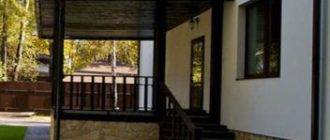

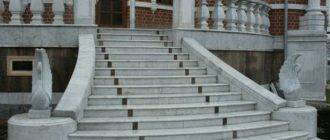
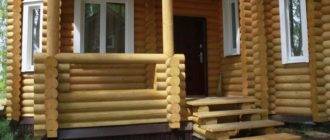


Made a rope ladder for a child. After all, everyone dreamed of a tree house, such as in American films? I decided to make my dream come true. The technique, in principle, is not difficult, the main thing is to choose a reliable rope.
And since childhood, I had a dream of my own dovecote, well, last summer I built it at my dacha, and I used a rope ladder, now it feels like I'm Baron Munchausen who climbs into the film Love and Pigeons.
I have one at my dacha. Very convenient, but I bought it at the store. It may not be difficult to do it yourself, but it will take a lot of time. It is easier and cheaper to buy ready-made, they are sold in many different sizes, both in length and in width.